| |
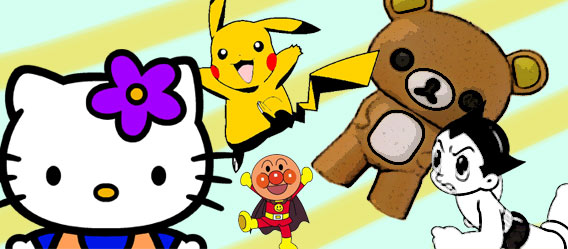
Japanese popular culture with its myriad of fascinating and creative innovations and unique style and popular taste has long been a subject of interest to the West. From anime, manga, to cosplay, the influx of Japanese popular culture has been widely celebrated even embraced by people all around the world.
This month we take a look at some of Japan’s most beloved and popular characters, some creating worldwide crazes, others have become classics that continue to be well loved in Japan and beyond today as much as they were at their time of creation.
The Classic
These timeless characters have attained classic status both within and beyond Japan are well known by many around the world.
Hello Kitty
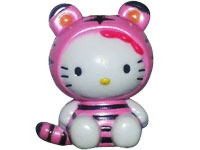 Designed by Yuko Shimizu and produced by the Sanrio Company, Hello Kitty was first introduced in Japan in 1974. The creation of Hello Kitty began when Shintaro Tsuji, the founder of Sanrio Company discovered in the early 1960s that by adding cute designs onto his merchandises, they became more profitable. Designed by Yuko Shimizu and produced by the Sanrio Company, Hello Kitty was first introduced in Japan in 1974. The creation of Hello Kitty began when Shintaro Tsuji, the founder of Sanrio Company discovered in the early 1960s that by adding cute designs onto his merchandises, they became more profitable.
Hello Kitty was originally conceptualized to appeal to young girls, and at the time of its creation, Britain was seen as very trendy in Japan, and Hello Kitty was designed to differentiate from other characters at the time that were associated with the United States.
In Hello Kitty’s character profile, her birthplace is listed as London, England. Hello Kitty’s continued popularity is in large due to the constant new themes and designs of this icon that makes her as popular and relevant today as she was 30 years ago. Today, Hello Kitty continues to be well-loved with her appeal extending to all age groups and all around the world.
Astro Boy
Also known as the might atom boy, Astro boy first appeared in a manga series in 1952. This series was later adapted to television. In the series, Astro is a powerful robot that was built by the head of the Ministry of Science set in a futuristic world. Astro was later discovered to have superior powers and skills and takes on crime fighting against evil ad injustice.
Astro boy is well loved by many in Japan and worldwide and this series is generally recognized as the stylistic pre-cursor for what is widely known today as anime in the Western world.
Anpan Man
Anpan man came from a picture book series written by Takashi Yanase beginning in 1973 and was inspired by Yanase’s experience during the Second War World when he suffered from hunger and dreamt of eating anpan (a sweet Japanese pastry filled with red bean paste). Thus, Anpan man’s unique feature is that his head is made of anpan—the Japanese red bean paste filled bread. Anpan man’s weakness is water and anything that dirties his head, he has super power hearing and can hear anyone’s calls of distress. Anpan man is known to let anyone in hunger eat off a bit of his head. Anpan man regains his strength when his creator, the kind baker Uncle Jam bakes him a new head.
Less well known around the world today, Anpan man continues to be very popular and well-loved in Japan.
Peko Chan
The mascot of Fujiya Company that sells well loved confectioneries in Japan, most recognizably, a milky hard candy, Peko Chan is found on many Fujiya snack and food packages. She wears two pigtails and two blue bows and has a recognizable smile with her tongue sticking out on the side.
Her recognizable presence is well known to generations of Japanese children. Peko Chan is often featured on various confectionery products of the Fujiya Company and is even placed outside of their stores and bakeries. Peko Chan is also known to have changing attires to go with the season. During the New Year, Peko Chan can be seen wearing a kimono.
Modern Day Crazes
Beyond the classic favorites, Japanese companies continue to create new popular characters that are marketed both domestically and internationally. Often these characters take on a life of their own as they gain mass followings around the world.
Rilakkuma Teddy Bears
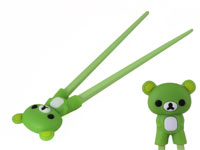 Created in 2003 by San-X, a Japanese company that specializes in the design of cute and adorable characters that are often found on stationery sets and other toys and trinkets, which are extremely popular in Japan, Rilakkuma first appeared in a series of picture books produced by San-X. Created in 2003 by San-X, a Japanese company that specializes in the design of cute and adorable characters that are often found on stationery sets and other toys and trinkets, which are extremely popular in Japan, Rilakkuma first appeared in a series of picture books produced by San-X.
Rilakkuma is a teddy bear character created by San-X creator Aki Kondo. Riklakkuma’s name comes from the two Japanese words that mean relax and bear. True to its name, Riklakkuma enjoys leisurely activities including watching T.V, soaking in hot springs, sleeping and listening to music. A series of video games created by Nintendo also features Rilakkuma. Rilakkuma is so popular in Japan that in 2009, an exclusive edition of Rilakkuma themed notebook computers was created.
Kureyo Shin Chan
Originally created as a Japanese manga series, Kureyo Shin-chan, also known as crayon Shin-chan, or simply shin-chan became widely popular worldwide after it was adapted to an animation series that began airing in 1992 in Japan. Kureyo Shin-Chan follows the five year old character and his adventures with his parents, baby sister, dog, neighbors, and his kindergarten friends, offering a humorous and refreshing take on the hilarity of the daily conflicts in the world of a five year old. A unique aspect of the character of Kureyo shin-chan is the mixture of inappropriate jokes with childish and innocent humor.
The show continues to this day and has been dubbed in English, Dutch, German, French, Italian, Portuguese, Spanish, Galician, Catalan, Basque, Polish, Chinese, Korean, Hindi, Hebrew, Tamil, Tagalog, Indonesian, Malay, Thai and Vietnamese.
Pokemon
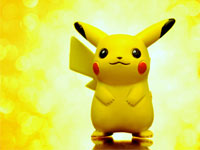 The name given to a series of characters in an original Nintendo video game, pokemon is the shortened name for Pocket Monsters. First created in 1996, pokemon craze swept the world as children and adults alike trained, battled and collected pokemons as part of the mission of the video game. Following the success of the game, an animation series as well as various animated films were also released in various languages all around the world. The name given to a series of characters in an original Nintendo video game, pokemon is the shortened name for Pocket Monsters. First created in 1996, pokemon craze swept the world as children and adults alike trained, battled and collected pokemons as part of the mission of the video game. Following the success of the game, an animation series as well as various animated films were also released in various languages all around the world.
While there were a wide variety of pokemons, some cute, others more fearful and powerful, the character most widely known and associated with both the game and the animation is the character Pikachu. An electric power pokemon, Pikachu is most well known and well loved because of its central role as the player’s accompanying pokemon during the Pokemon Yellow version of the video game. This companion role of Pikachu was continued in the animations and films.
Though waning somewhat from its earlier craze, pokemon still continues to have a strong appeal as Nintendo continues to develop new versions of the game and produces new merchandise associated with this franchise.
Domo Kun
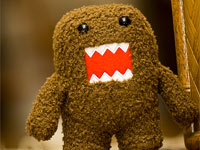 The official mascot of NHK—Japan’s television station, Domo Kun first appeared as part of a stop-motion animation in 1998 celebrating the 10th anniversary of NHK’s satellite broadcasting. The name Domo came about as a tongue in cheek pun when the T.V announcer said “Domo Konichiwa” when introducing the show which both means “Well, hello there!” and “Hello Domo!” The official mascot of NHK—Japan’s television station, Domo Kun first appeared as part of a stop-motion animation in 1998 celebrating the 10th anniversary of NHK’s satellite broadcasting. The name Domo came about as a tongue in cheek pun when the T.V announcer said “Domo Konichiwa” when introducing the show which both means “Well, hello there!” and “Hello Domo!”
Today, Domo has his own manga and video games. The claymations featuring Domo are whimsical and humorous, which makes Domo kun such an endeared and beloved mascot in Japan and worldwide.
Japanese Characters, Crazes and the Cult of Popularity
To those unmoved by the crazes and popularity of these Japanese characters, many of these passing crazes and waves of popularity for these Japanese characters may seem frivolous. For some, these Japanese characters may even appear to simply be a way for companies to market more unnecessarily merchandises. But on a deeper level, these funny and often endearing Japanese characters often move a deeper part of those who are fans.
For one, they reconnect people to the innocence and joy of childhood, where good triumphs over evil, and where hunger can be solved by the generosity of a bread-headed hero, and where nostalgia may come in the form of a mischievous girl in pigtails with her tongue in cheek smile.
|
|
 |
OUR 2013 NEWSLETTERS
Popular Japanese Characters and the Cult of Popularity
Exotic Fruit Kingdom- Journey into the World of Asian Fruits
Light Asian Snacks
Way of the Gods: Shintoism in Japan
The Chinese concept of Yin and Yang
Onsen: Japanese Hot springs—Enjoyment and Etiquette
Lunar New Year 2013: The Year of the Snake
Nabemono - Japanese Hot Pots
NEWSLETTER ARCHIVES
2013
2012
2011
2010
2009
2008
2007
2006
2005
2004
2003
2002
2001
|


 Designed by Yuko Shimizu and produced by the Sanrio Company, Hello Kitty was first introduced in Japan in 1974. The creation of
Designed by Yuko Shimizu and produced by the Sanrio Company, Hello Kitty was first introduced in Japan in 1974. The creation of  Created in 2003 by San-X, a Japanese company that specializes in the design of cute and adorable characters that are often found on stationery sets and other toys and trinkets, which are extremely popular in Japan,
Created in 2003 by San-X, a Japanese company that specializes in the design of cute and adorable characters that are often found on stationery sets and other toys and trinkets, which are extremely popular in Japan,  The name given to a series of characters in an original Nintendo video game, pokemon is the shortened name for Pocket Monsters. First created in 1996, pokemon craze swept the world as children and adults alike trained, battled and collected pokemons as part of the mission of the video game. Following the success of the game, an animation series as well as various animated films were also released in various languages all around the world.
The name given to a series of characters in an original Nintendo video game, pokemon is the shortened name for Pocket Monsters. First created in 1996, pokemon craze swept the world as children and adults alike trained, battled and collected pokemons as part of the mission of the video game. Following the success of the game, an animation series as well as various animated films were also released in various languages all around the world.  The official mascot of NHK—Japan’s television station, Domo Kun first appeared as part of a stop-motion animation in 1998 celebrating the 10th anniversary of NHK’s satellite broadcasting. The name Domo came about as a tongue in cheek pun when the T.V announcer said “Domo Konichiwa” when introducing the show which both means “Well, hello there!” and “Hello Domo!”
The official mascot of NHK—Japan’s television station, Domo Kun first appeared as part of a stop-motion animation in 1998 celebrating the 10th anniversary of NHK’s satellite broadcasting. The name Domo came about as a tongue in cheek pun when the T.V announcer said “Domo Konichiwa” when introducing the show which both means “Well, hello there!” and “Hello Domo!”